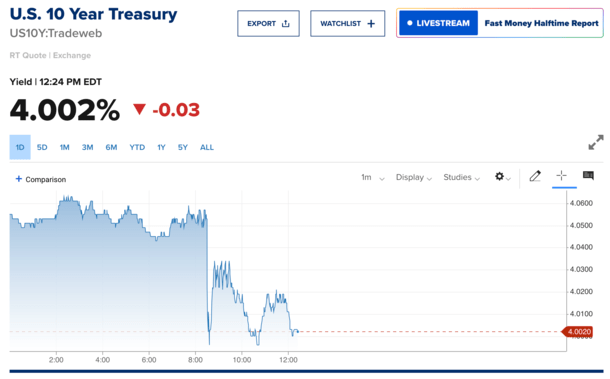A slightly warmer-than-expected inflation report was offset by a cooler-than-expected jobs report today, keeping mortgage rates relatively flat.
I spoke about the tug-of-war that is now taking place between inflation and labor when it comes to interest rates.
Basically, we had an inflation problem for the past few years, and now we have a labor problem.
That inflation problem made mortgage rates surge higher, while the labor problem is helping to push mortgage rates back down.
But there is some concern that inflation could tick higher in coming months, putting upward pressure on mortgage rates.
Consumer Prices Above Expectations as Jobless Claims Highest Since 2021
This morning, the CPI report came in a tad hot, with a 0.4% increase for the month, above the 0.3% forecast and the largest gain since January.
However, that kept the annual inflation rate at 2.9%, the number economists surveyed by Dow Jones had expected.
Still, prices were up 0.2% from the prior month and core CPI that excludes food and energy was at 3.1%, well above the Fed’s long-run target of 2%.
In addition, services inflation excluding energy, which includes things like health insurance, increased 0.3% and is up 3.6% on the year.
So the work isn’t done yet on inflation, and concerns remain that prices could tick higher over time thanks to tariffs.
This is something to keep an eye on as we watch labor apparently break before our very eyes.
Speaking of, jobless claims came in at 263,000 for the week ended September 6, per the Labor Department.
That was well above the 235,000 predicted and also the highest level since October 2021.
However, the increase was blamed mostly on the floods that took place in Texas over the summer.
10-Year Bond Yield Briefly Dips Below 4%

If you’re attempting to track mortgage rates, the best tool that is the most easily accessible is the 10-year bond yield.
You can look it up anywhere, just like a stock symbol. It can change daily, just like a stock price.
The 30-year fixed and 10-year bond yield move in relative lockstep, so if bond yields are down, mortgage rates will also be lower on the day.
This morning, the 10-year bond yield briefly slipped below 4% on the jobs data before climbing a tad on the warmer inflation report.
But it seems the labor data is carrying more weight right now, which is great news for mortgage rates.
The 10-year hasn’t been this low since it briefly fell in April during the tariff drama, and could be headed even lower for the remainder of the year.
A few months back, I pointed out that the range for the 10-year bond yield was 3.75% to 4.50%, and we’re now nearing the bottom of that range again.
If the 10-year bond yield slips to 3.75%, we might see a 30-year fixed at right around 6%.
One plus lately is mortgage rate spreads have also come in, with the 30-year pricing about 225 basis points (2.25%) above the 10-year yield.
Simple math (2.25 + 3.75 = 6). The spread had been as high as 325 bps during 2023 when the 30-year climbed to 8%.
But now we have more stability on spreads and weaker economic data, which means it’s possible 30-year mortgage rates could move even lower from here.
Just continue to keep an eye on inflation and watch out for an unexpected hot jobs report too. Remember, as expectations move lower, it’s easier to record a “beat” on labor.
Read on: 2025 Mortgage Rate Predictions

